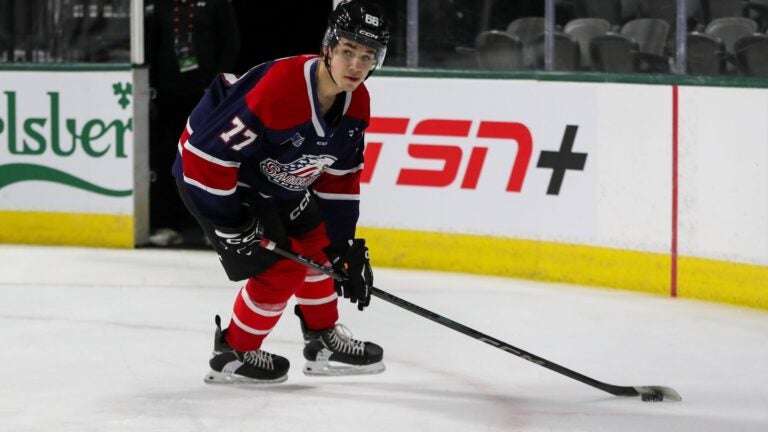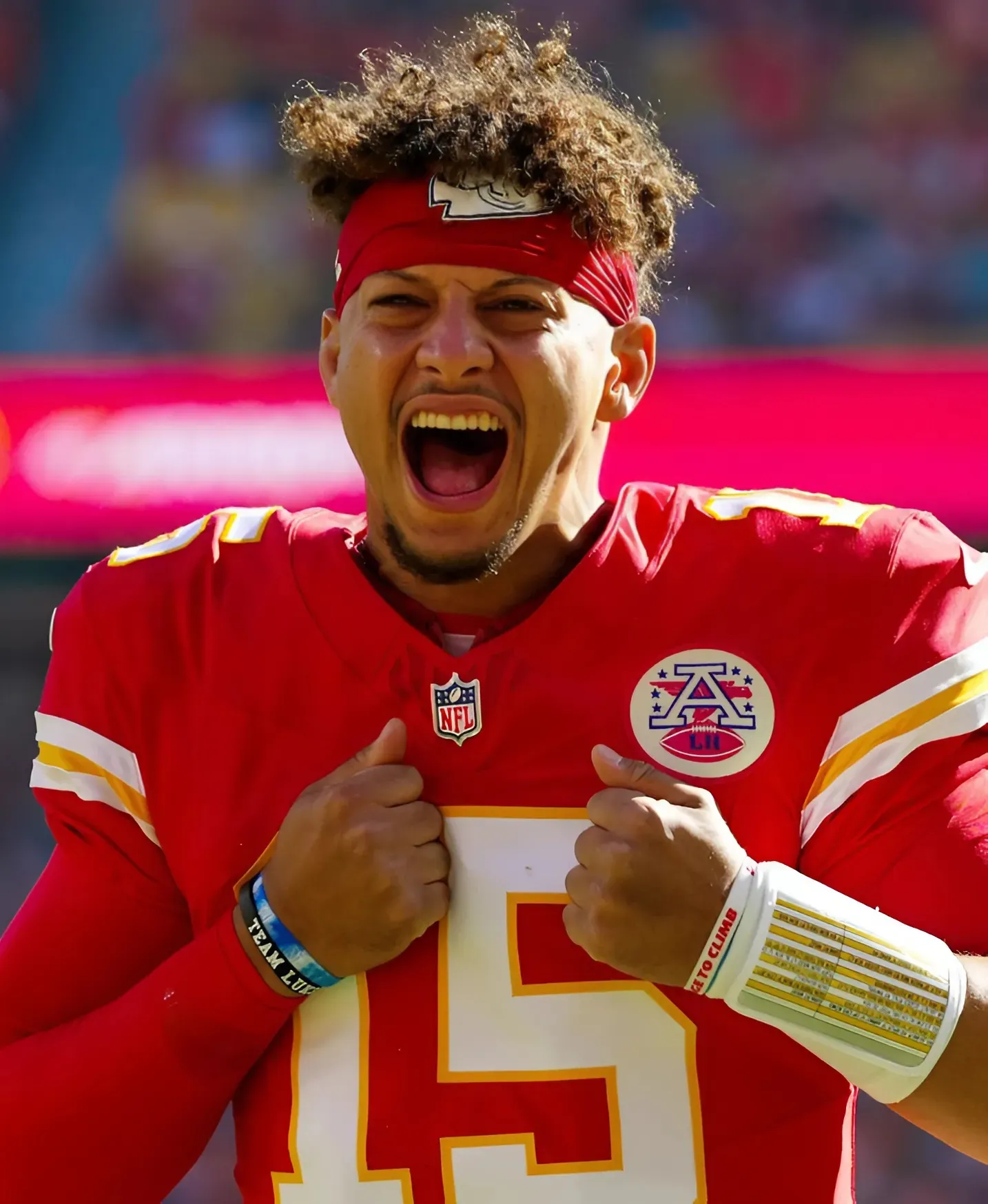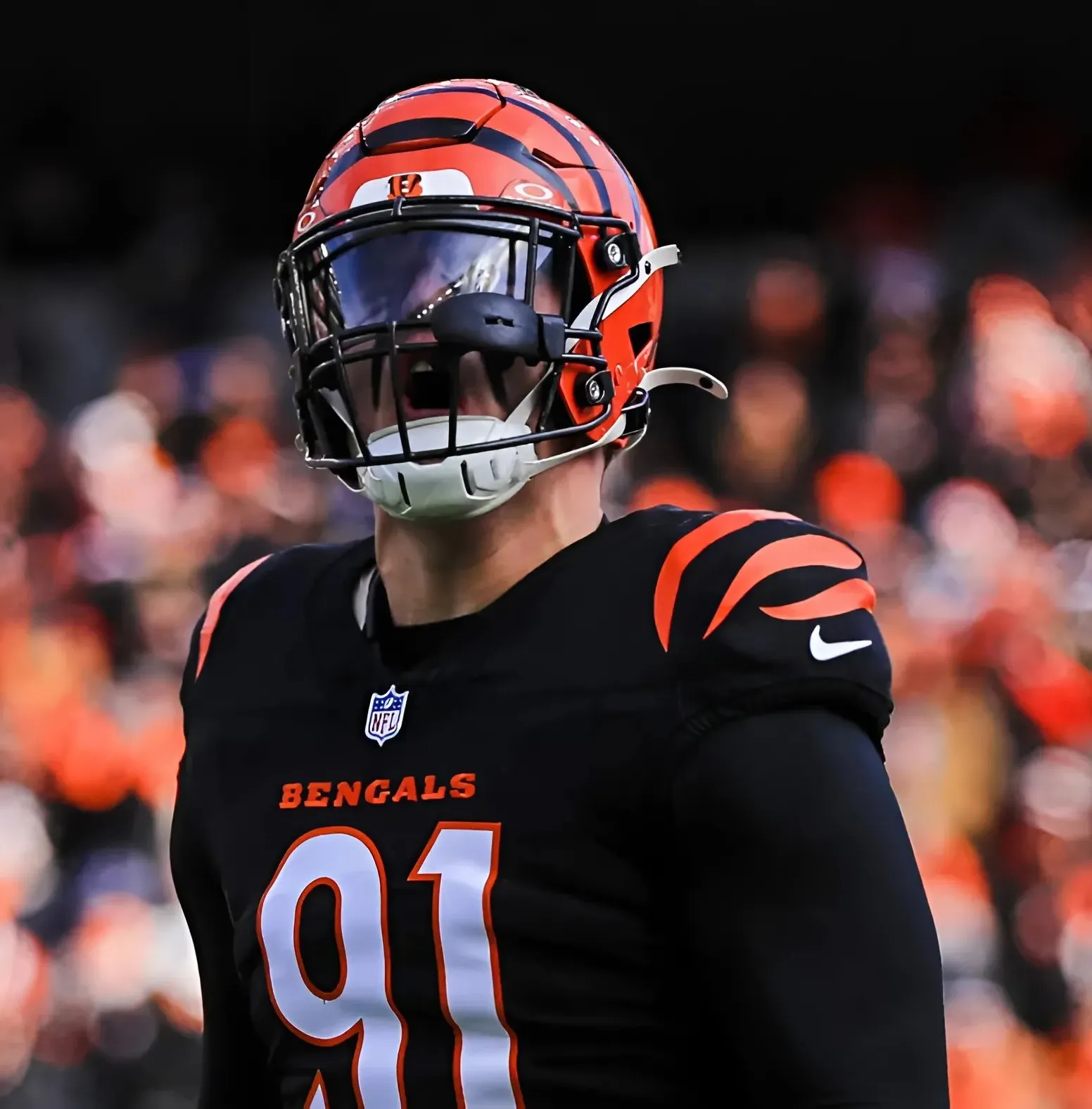The Bruins could move all the way up to No. 1 or drop as far as No. 7 overall in the 2025 NHL Draft.

For the first time since 2011, the Boston Bruins are set to pick in the top 10 of an NHL Draft.
Despite closing out a miserable 2024-25 season with the fifth-worst record in the NHL, the Bruins will not know exactly where they fall in the 2025 NHL Draft order until Monday night, when the league conducts its annual draft lottery from the NHL Network studio in Secaucus, N.J.
With their record, the Bruins have the opportunity to move all the way up to either the No. 1 or No. 2 pick — or could fall as far as No. 7.
Here are the odds that the Bruins have at landing several picks entering the draft, according to Tankathon:
1st overall: 8.5 percent
2nd overall: 8.6 percent
3rd overall: 0.3 percent
4th overall: 0 percent
5th overall: 24.5 percent
6th overall: 44.0 percent
7th overall: 14.2 percent
While Don Sweeney and Boston’s top brass will welcome the opportunity to pluck the first prospect off the draft board on June 27 in Los Angeles, the Bruins should be able to add a blue-chip talent regardless of where they settle in on the draft order.
With the lottery set for Monday night, here’s a look at eight prospects to keep tabs on the weeks leading up to the NHL Draft.
Michael Misa, C, Saginaw Spirit (OHL)
If fortune falls the Bruins’ way and they move up into a top-two pick, the decision becomes a bit easier for Boston on draft night.
With Boston’s ceiling limited by the absence of a top-line pivot, adding the best center prospect in this draft in Misa would stand as a breath of fresh air for Boston’s lackluster prospect pipeline.
It wouldn’t take much to pitch Bruins fans on Misa’s future as a potential franchise fixture. Be it the game tape he submitted at Saginaw or the video-game stats he racked up, Misa has all the makings of a playmaking force at hockey’s highest level.
The 18-year-old forward paced the entire OHL in scoring last season, posting 134 points (62 goals, 72 assists) in just 65 games. That points-per-game production paced other top-five picks coming out of the OHL, including Mitch Marner, John Tavares and Joe Thornton.
Compared to Steven Stamkos by NHL.com senior draft writer Mike G. Morreale, Misa in some respects mimics a suped-up Brayden Point, who uses his shifty skating ability and advanced hockey IQ to weave through Grade-A ice and both fire off high-danger looks and feed his teammates for quality scoring bids.
While some of the prospects further down in this draft list fall into two distinct categories between playmaker and pure scorer, Misa can do both as a dynamic offensive conduit, while his 6-foot-1, 184-pound frame maps out a prospect who should be able to withstand the punishment found in the NHL ranks once he adds some muscle.
Misa could use a bit more seasoning, but it wouldn’t be far-fetched seeing him contribute in a top-six role with Boston in short order — while also adding a significant lift on both the power play (44 power-play points) and penalty kill (four shorthanded tallies).
The 2024-25 season was a miserable campaign for all involved on Causeway Street. Coming out of that year with a player like Misa would alleviate some of that sting, and then some.
Matthew Schaefer, D, Erie Otters (OHL)
If the Bruins move up to No. 1 overall, things get interesting in one respect.
Misa might address the most pressing need on this Bruins roster moving forward. But a fleet-footed, top-pairing defenseman like Schaefer might be the best overall talent in this draft class — and could be tough to pass up if Boston is the first club on the clock.
For a Bruins team whose identity has often been rooted in franchise pillars on the blue line, adding a player of Schaefer’s caliber to a D corps grouping already anchored by Charlie McAvoy and Hampus Lindholm would be tempting.
A fractured collarbone at World Juniors might have cost Schaefer the rest of his season in December, but it’s a testament to his skill set and ceiling that his standing as the No. 1 prospect in this draft has largely been unchallenged.
Advertisement:
On paper, Schaefer is seemingly everything a team is looking for in today’s NHL when it comes to a top-pairing D. The 6-foot-2 blueliner is an elite skater and slick playmaker who recorded 22 points in 17 games while running Erie’s power play.
But Schaefer — who doesn’t turn 18 until the first week of September — is more than just an offensive-focused D-man, as he logged heavy minutes and killed plays in the D-zone by way of bruising checks and quick outlet passes. Morreale compared him to Zach Werenski, while Corey Pronman of The Athletic drew parallels to Ottawa’s Jake Sanderson.
Targeting the blue line feels like an ill-advised move for the Bruins if they rise up to No. 1 overall. But there’s a lot to like about rolling out a top pairing of Schaefer and McAvoy for the next decade.
James Hagens, C, Boston College (NCAA)
If the Bruins are banking on value, having an uber-skilled forward like Hagens fall to them in the 5-7 range would stand as a major coup for a franchise that was hindered by a dearth of high-end talent in 2024-25.
Hagens entered this season as the presumptive No. 1 pick in the 2025 NHL Draft, drawing comparisons to Jack Hughes as a dynamic, top-line force at the next level.
But, his stock has seemingly slipped after a strong first season as an 18-year-old freshman at Boston College. Even though the center posted 37 points (11 goals, 26 assists) in 37 games against elite competition in Hockey East, some talent evaluators were likely expecting a bit more.
Given his lofty draft projections, there might have been some disappointment that the New York native didn’t storm onto the scene and put up a season like other elite talents in collegiate hockey like Macklin Celebrini (64 points) and Jack Eichel (71 points).
Hagens has a few question marks regarding his smaller size (5-foot-11, 178 pounds), the impact of having a strong supporting cast at BC (Ryan Leonard and Gabe Perreault), and his hesitancy to put shots on net.
But make no mistake, if he’s available when Boston most likely lands on the clock at No. 5 or No. 6, the Bruins have a chance to add a legitimate top-line talent.
Hagens’ label as a potential No. 1 pick this fall was not without merit.
Beyond his reputation as arguably the best skater in this draft class, Hagens closed out his tenure with the U.S. National Team Development Program with 102 points in 58 games in 2023-24.
That same season, he set a new scoring record at the 2024 World U18 Championships with 22 points (nine goals, 13 assists) in just seven games, breaking the previous record set by Nikita Kucherov.
Anton Frondell, C, Djurgardens (HockeyAllsvenskan)
Frondell might be the most appealing prospect among that second tier of center prospects after Misa.
The 17-year-old Swede could be the most NHL-ready product after Schaefer, especially after posting 25 points (11 goals, 14 assists) in 29 games in Sweden’s second-tier professional league (Allsvenskan).
While that may not pop off the same page as Misa’s lofty stat line, it stands as the best points-per-game production for a U-18 player in Allsvenskan history. The players behind Frondell on that list? William Nylander and David Pastrnak.
Armed with a heavy shot that he uses to shred opposing PK units on the man advantage, Frondell also had a pro-ready frame (6-foot-1, 198 pounds). He’s not exactly a power forward, but Frondell has the body and the willingness to engage down low.
Given Boston’s need for a shot-first, top-six talent who can handle the rigors of NHL competition, a pivot like Frondell checks off plenty of boxes.
But that pro-ready skillset and scoring touch might also make him the exact type of prospect that another team sitting at No. 3 or No. 4 would scoop up before Boston has a chance to submit their draft card.
Caleb Desnoyers, C, Moncton Wildcats (QMJHL)
If “skill” might be the buzzword for Hagens and Frondell, “safe” appears to be the apt description for a player like Desnoyers.
The Moncton center boasts the highest floor among that top crop of pivots in this draft class as a potential two-way, second-line center. “Safe” draft picks and “high-floor” prospects might make some Bruins fans recoil, but Desnoyers would be far from a low-value pickup by the Bruins.
If anything, his well-rounded game might make him the most appealing option for the Bruins at picks 5-7 if the Quebec native is up for grabs, especially given that Boston needs to hit on this selection.
He may not have Hagens’ wheels or Frondell’s shot, but Desnoyers has few faults in his overall game. He skates well, has good hands, is a heads-up passer, and is a poised defensive asset who can throw his weight around.
He’ll need to tack on some muscle (178 pounds) but Desnoyers also has the makings of a big-bodied pivot (6-foot-2) who could eventually be utilized in all situations.
And for all of the discourse about him being the safer option with a lower ceiling, Desnoyers still put up 84 points (35 goals, 49 assists) for the Wildcats during the regular season and has posted 24 points (nine goals, 15 assists) in 13 games this postseason.
Desnoyers may not be a point-per-game playmaker at the NHL level, but he could eventually develop into an effective 2C — capable of putting up 60-70 points while earning some Selke votes.
Sure sounds like a player that the Bruins would love to have for the next decade.
Jake O’Brien, C, Brantford Bulldogs (OHL)
O’Brien continues to see his stock rise in the months leading up to the NHL Draft.
The Toronto native has seemingly pushed himself into the conversation alongside the likes of Frondell, Hagens, and Desnoyers off of a dominant season with the Bulldogs, scoring 32 goals and posting 98 points in 66 games against OHL competition.
That playmaking poise had NHL Central Scouting take notice, as they ranked him the No. 4 prospect among North American skaters, ahead of Desnoyers (No. 7 overall).
A poised passer who generates quality scoring chances by operating around the net, O’Brien can burn teams in a hurry off a slick backhand feed or dish from behind the goal line. O’Brien, who turns 18 in June, will need to both bulk up (172 pounds) and work on his skating at the next level.
But O’Brien’s skillset paints the picture of a forward who could develop into a potent top-six offensive threat — even if it might take a few years for him to make those strides in the NHL ranks.
Roger McQueen, C, Brandon Wheat Kings (WHL)
A 6-foot-5 centerman with some jam? Sounds like the type of player that the Bruins’ top brass would covet.
But as tantalizing as McQueen’s blend of size and skill is, the forward might be best viewed as a reach for Boston, even if the Bruins drop all the way to No. 7 overall.
Even though McQueen’s game tape showcases a young skater who could develop into a second-line menace down the middle, his strong production at Brandon (20 points in 17 games) was undercut by a back injury that cost him over four months of play this year, while skating has been tabbed as a weakness in his game.
After rolling the dice on another rangy centerman during last year’s draft in Dean Letourneau, it remains to be seen if Boston would want to also swing for the fences on a prospect in McQueen with high upside, but some notable red flags.
Porter Martone, RW, Brampton Steelheads (OHL)
Martone is the lone forward in this grouping that isn’t a center — but it’s tough to leave a potential top-six power forward off this list if he’s around when Boston picks.
The 6-foot-3 Martone projects as an impact player in the pro game given both his size and the production (37 goals, 61 assists) that he submitted with Brampton this past season.
As expected, Martone uses that imposing frame to win puck battles, jam home rebounds, and crush skaters into the glass. But his best value might be his passing, as he created plenty of tap-in tallies for his linemates by taking up space in high-danger ice.
Given the premium placed on top-six brusiers in the NHL, Martone could be a top-five pick in this draft class, with Morreale projecting him as a playmaking winger akin to Corey Perry.
Similar to Schaefer, Martone doesn’t necessarily address Boston’s most pressing need for the future. But if the winger does start to slip in that 5-7 range, the Bruins would likely be remiss to not gauge whether or not a player like Martone would generate the most sizable impact among that crop of prospects.



